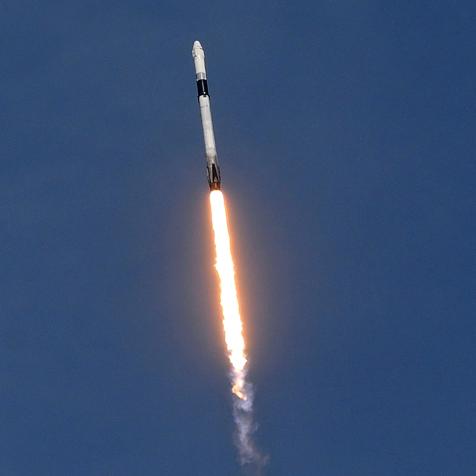
ISS/NASA
Celebrating 20 Years of Food in Space on the ISS
This year marks the 20th anniversary of continuous human presence aboard the International Space Station. Do you ever wonder what the astronauts have been eating for the past 20 years in zero gravity? Let’s find out!
The History of Space Food
The first American astronaut to eat in space was John H. Glenn in 1962 during the Friendship 7 flight of the Mercury Program. Space food during this time was based on Army survival rations. While he orbited the Earth, his crumb-free meal consisted of applesauce and was packed in a tube. He later consumed pureed beef and vegetables. It was unclear at the time in America if an astronaut could digest food properly in zero gravity. John H. Glenn proved it was possible.

NASA
Aluminum tube containing beef and vegetables from Mercury food supplies.
During Project Gemini, American astronauts were introduced to freeze-dried space food. The astronauts added water to the contents of the packaging prior to eating. Meals consisted of an entrée, vegetable, and dessert. The first consumption of solid food in space was on Gemini 3.

NASA
(March 1965 ) --- Food packets for use on the Gemini-3 flight including dehydrated beef pot roast, bacon and egg bites, toasted bread cubes, orange juice and a wet wipe. Water is being inserted into the pouch of dehydrated food.
Later, the Apollo missions allowed for more food items to choose from, the option of hot water, and packaging made for spoons. Each meal was designed with nutrition in mind. Served out of packages, Neil Armstrong and Buzz Aldrin reportedly ate beef and vegetables, pork with potato scallops, Canadian bacon, and applesauce.
In 1973 during the Skylab Program, the third stage of a Saturn V rocket was transformed into a space station. The space station had a galley in which the astronauts could cook their meals as well as store food in a refrigerator or freezer. During this time, the astronaut’s favorite meal was ice cream. Unfortunately, Skylab marked the end of refrigerators or freezers for long term food storage in space.

NASA
Skylab 4 astronaut Edward G. Gibson at the Skylab galley.
During the Space Shuttle era, astronauts were able to choose meals from an extensive menu provided by NASA Space Food Systems test kitchen in Houston, Texas, before lift-off. These meals were shelf-stable through the process of freeze-drying and thermo-stabilization. No refrigeration needed just like the Mercury, Gemini, and Apollo days.

NASA
Space Shuttle astronauts had a wide variety of foods available to them. Food shown here includes a space station meal tray with packaged food and drink; different types of space food including beverages, rehydratable food (shrimp cocktail), intermediate moisture (dried apricots, beef tips & mushrooms), natural form and thermostabilized/aseptic fill (peach yogurt, butterscotch pudding); rehydratable beverage (coffee and cream); rehydratable food (shrimp cocktail); and irradiated steak.
What’s for Dinner Tonight on the ISS?
Similar to the space shuttle era, astronauts on the International Space Station consume various shelf-stable foods, except bread. Crumbs are not welcome on the ISS as they can find their way inside the air filtration system and damage equipment. The astronauts have methods for warming their food. They plate their meals within disposable packaging on magnetized trays accompanied with utensils. Some favorite space food items are tortillas, chicken teriyaki, hamburgers, shrimp cocktail, tacos, pasta, peanut butter, cookies, and brownies. Condiments include liquid form salt, pepper, and hot sauce.

ISS/NASA
STS-98 Pilot Kenneth D. Cockrell preparing breakfast burritos for his crewmates.
Different types of cuisines from all over the world are enjoyed on the ISS as crew members tend to share their country's specialties with one another. Some memorable favorites have been borscht from Russia, macarons from France, and sushi from Japan.

ISS/NASA
Right: Expedition 55 crewmembers
(left to right) Anton N. Shkaplerov, Oleg G. Artemev, and Norishige Kanai enjoy a sushi dinner.
In December 2019, for the very first time, a batch of chocolate-chip cookies were oven baked in space by the Expedition 61 crew. Double Tree by Hilton provided the pre-made cookie dough which was launched to the ISS with a Zero G oven from Zero G Kitchen. The astronauts sent their baked space cookies for testing back to Earth in a SpaceX Crew Dragon capsule.
Thanks to the efforts of food scientists and evolving technology, astronauts now have over two hundred diverse food items to choose from as they journey in space.


















